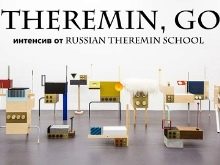What is a theremin and how is it played?
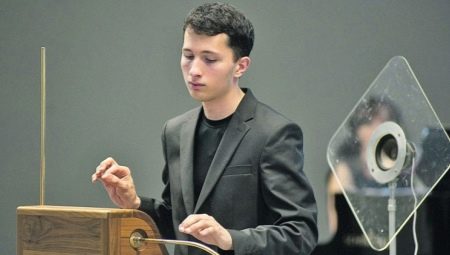
The past century has been marked by the rapid development of electric musical instruments. Some were electronic versions of pianos, guitars, and other acoustic prototypes. Others surprised humanity with an unusual sound, original technique of performance and expressive capabilities. The first in a line of fundamentally new instruments was the theremin, the history and varieties of which are worth considering.
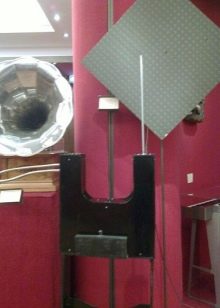
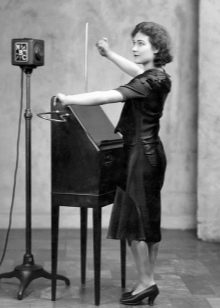
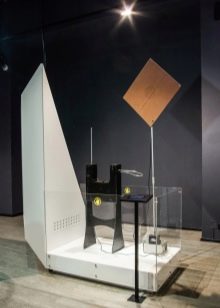
What is it and how does it work?
In the theremin, sound is generated by moving the hands in an electromagnetic field, which is created by two generators. Moreover, the first operates at a constant frequency, and the second at a variable. Getting into the electromagnetic zone of the performer's upper limb and their movements change the frequency indicators, which affects the characteristics of the sounds obtained. The device of a musical instrument includes two antennas: a straight vertical and a horseshoe-shaped horizontal. The first is responsible for the pitch. The closer the hand gets to the antenna, the higher the theremin sounds.
The horizontal design affects the volume. Consequently, the melody is born by changing the distance between the antennas in accordance with the required pitch of the sounds. From the outside, it seems that the musician is waving his arms in space. The principle of the theremin seems to be simple, but this is the difficulty in learning.
The instrument lacks frets or keys, which prevents the student from using their eyes.Only those with a well-developed ear for music can get the sound they want.
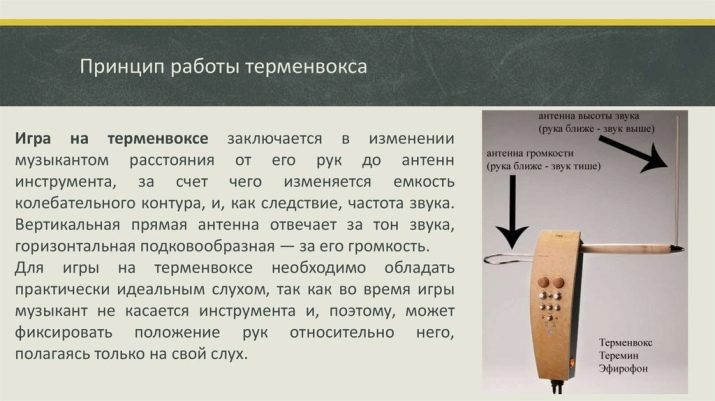
History of creation
The world's first instrument in question was invented by Lev Theremin. Moreover, in his research, the scientist pursued other goals. Initially, an employee of the Institute of Physics and Technology was instructed to measure the dielectric constant of gases taking into account the changing temperature and pressure. For this, a measuring device was invented, which consisted of a generator of electrical oscillations on a cathode lamp. However, to obtain more accurate results, the inventor needed to increase the sensitivity of the device. The achievement of this goal led to the combination of 2 generators with the transfer of signals to the cathode relay.
The values of the parameters of the test gas were supposed to influence the difference frequency, which increased the measurement accuracy and also protected against systematic errors. During the work on the device, it was noticed that when the difference frequency fell into the sound range, the result could be perceived by ear. And the sensitive device reacted even if hands got into the electromagnetic field. Lev Theremin, who had previously received a musical education, reasoned that artistic compositions could be performed on the device he invented. Therefore, he began to select different melodies, and the meeting of the circle of mechanics turned into the first solo concert.
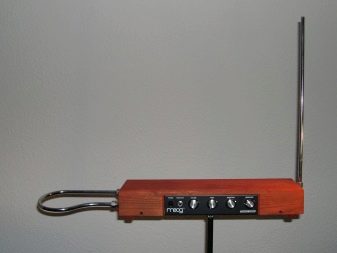
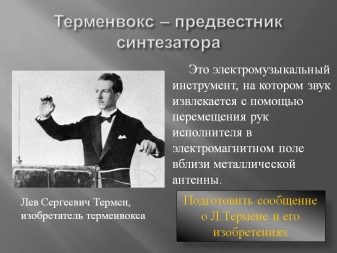
The resulting instrument was originally named eteron, since from the side of an ordinary observer, sound emerged from the air. Later, the invention was renamed in honor of the creator, adding the word "vox" (or voice) to the surname. V.I.Lenin became interested in the research of Lev Termen at one time. He spoke positively about the new musical instrument, and also took lessons to play it. Thanks to Lenin's support, the researcher was able to continue working on the device without hindrance, which could be difficult in the conditions of that time.
The spread of the theremin outside the USSR also became possible thanks to the efforts of the inventor. Theremin himself visited many European countries, as well as Asia and the USA with concerts. Gradually he acquired supporters, and after his visits schools of playing this instrument appeared.
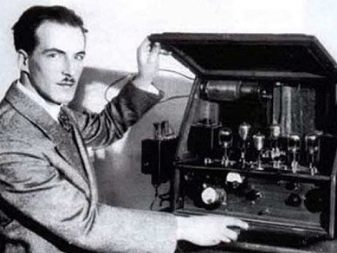
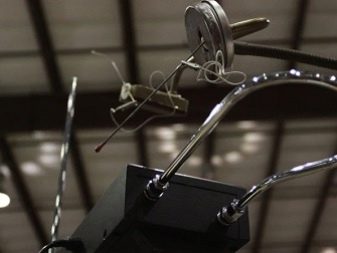
Species overview
Pupils and followers of Theremin continued to improve the performance capabilities of the instrument, so today there are several unusual variants of the theremin.
Classical
This is the name of the theremin variant developed by Lev Theremin. It assumes contactless sound control by moving hands between antennas. The instrument is played while standing. The inventor himself collected several classic theremins for his daughter, several talented students and museums. The popularity of this tool has led to the emergence of mass production firms.
Much credit in this direction remains with the American company Moog.
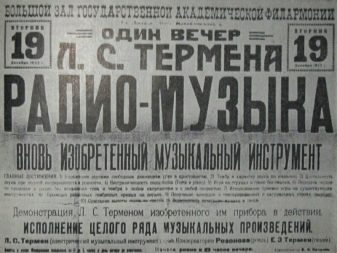
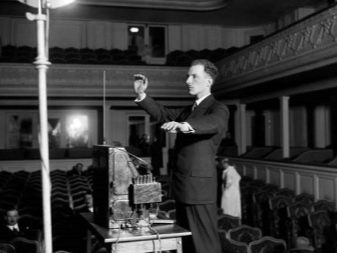
Kowalski systems
Konstantin Ioilevich Kovalsky was one of the first theremin performers, studying with Lev Theremin. He also voiced most of the parts on this instrument for Soviet films. The Theremin, created according to his system, still involved adjusting the pitch with the right hand. However, the left one was now responsible for controlling the general characteristics by means of buttons. The sound volume was controlled by a pedal, so you had to play the instrument while sitting.
Although the Kowalski theremin has not received the same widespread acceptance as the classical version, its use continues. In many ways, the promotion of the instrument is due to the efforts of the students and colleagues of the performer who founded the school in Moscow. Improvement of the system continues. So, designer Lev Korolev created a visualizer that allows you to determine the current note played on the instrument.
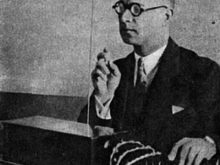
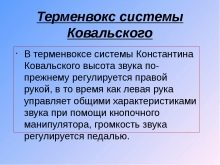
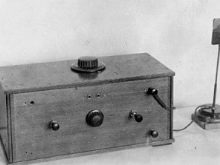
Matremin
Its own school of theremin performers appeared in Japan under the direction of Masami Takeuchi. He also supplied his version of the instrument with a "matryoshka", into which a device for automatic volume adjustment is inserted. The adjustment is made by changing the distance between the hand and the matryoshka.
Matremin is often used for ensemble performance. Moreover, such groups can number up to 270 musicians.

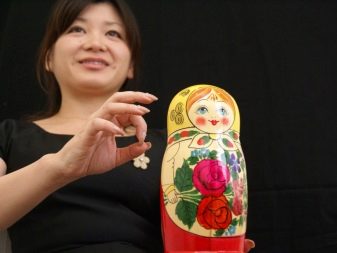
Virtual
A relatively new phenomenon in music is the electronic version of the theremin for touch screen devices. The SunVox program, developed by Alexander Zolotov, can work successfully on smartphones and computers. When the application is opened, a graph with vertical and horizontal axes appears in front of the user's eyes. Like the theremin, moving it vertically determines the pitch, while changing the distance horizontally affects volume.
The virtual version of the instrument is believed to be for entertainment purposes, as high screen resolutions are required to obtain the relative sound quality. In addition, in a smartphone, you can count on only a couple of octaves of the range, which is sufficient for singing vocal parts. In this case, the expressiveness of the sound can be increased using the capabilities of amplitude or frequency vibrato.
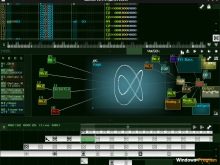

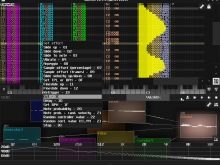
Sound features
Taking into account the peculiarities of the appearance of sound, one should not expect the usual timbre from the instrument. Often the sound of the theremin is close to the human voice. Light vibrations of the fingers can reproduce the vibrato found in opera singers. However, thanks to the settings, it can be made more stringy or windy, low or loud, gentle or harsh in shade.
The timbre features of the instrument made it possible to use it in a number of directions.
- Sound imaging effects. This instrument was used to convey the sound of a time machine in the film "Ivan Vasilyevich Changes His Profession". The theremin's unusual timbre has also become popular in films about space and alien guests. Moreover, this effect is observed not only in Soviet or Russian films, but also in the works of Hollywood.
- With certain settings, the instrument can reproduce sounds of nature. This is sometimes used when recreating birdsong or the roar of a motor.
- In the works of the classical repertoire. Due to the fact that the theremin sounds like a female voice, it is used in vocal compositions. These can be works by J. S. Bach, M. I. Glinka and other composers. One of the first to try to reproduce Glinka's romance "The Skylark" on the theremin. However, the best (from the point of view of the timbre indicator and the technique of using the instrument) is the performance of vocalist S.V. Rachmaninov.
Theremin can be used as an accompanying or ensemble instrument. However, this requires a special technique and skill in the game from the performer. If an instrument is taken for an ensemble, where the pitch of the sound is determined more precisely, any mistake will create a feeling of falsehood, which will ruin the composition.

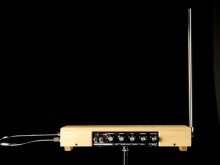
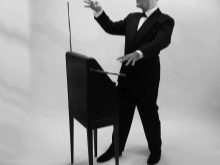
Learning to play
Considering the facts discussed above, we can say that the theremin is an unusual instrument that exists in different versions. Therefore, the question of how long the training will take is determined by the goals, the further desired level of the game.
For the amateur level, no special training is required. You just need to know how to position and move your hands in the electromagnetic field. Performers with little playing experience can practice:
- create a tremolo by fluttering hand movements next to the volume antenna;
- get the vibrato effect with similar movements with the other hand;
- smoothly move your hand along the antenna to get the effect of the sounds of space;
- perform jerking movements to get individual notes.
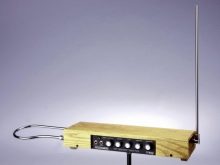
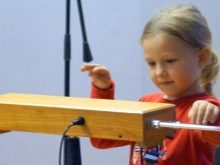

If you want to learn to play professionally, you should enroll in a music school.In Russia, this is done by the Russian Theremin School, which is now led by the great-grandson of the famous inventor - Peter Termen. Branches of this educational institution are located in Moscow and St. Petersburg. You can get theremin lessons in Japan. It is led by Masami Takeuchi.
To summarize: although the principle of the theremin was discovered in the process of studying another physical phenomenon, the instrument was recognized as the first step into the world of electronic music. The simple principle of its operation is coupled with the complexity of professional training, because the accuracy of sound production here is available only to people with perfect pitch. The unusual timbre and capabilities of the instrument contributed to its popularity in the world of cinema and contemporary music.
There are companies in the world that produce serial theremins. However, with some technical skills, you can assemble the tool yourself.

